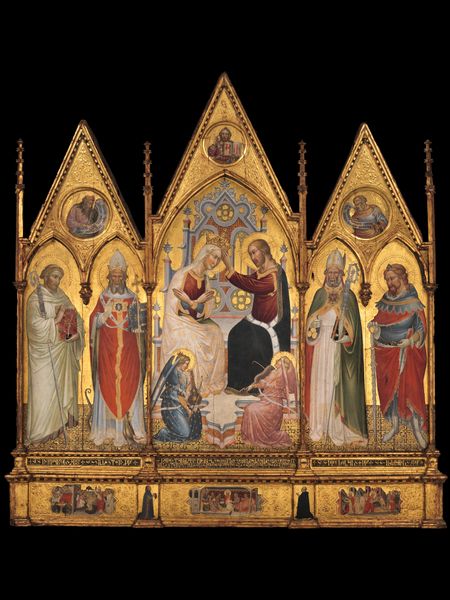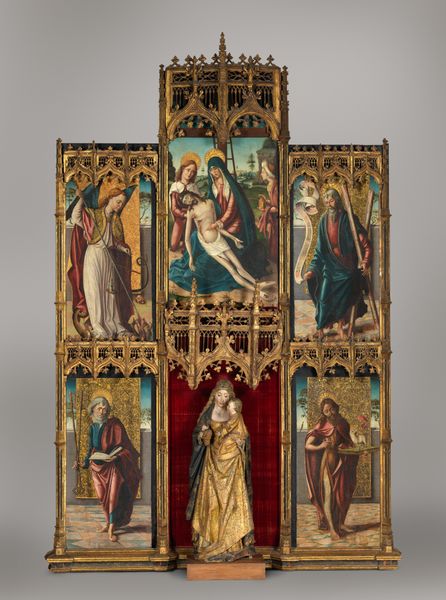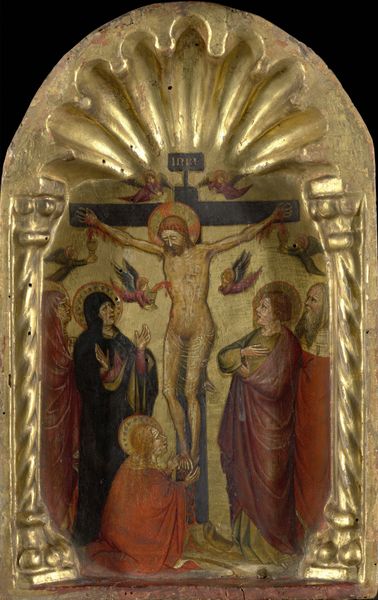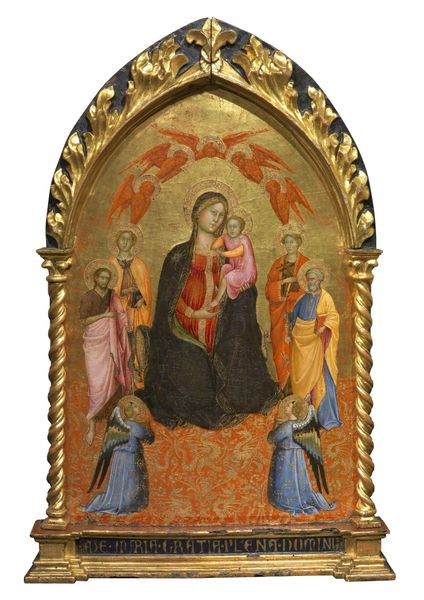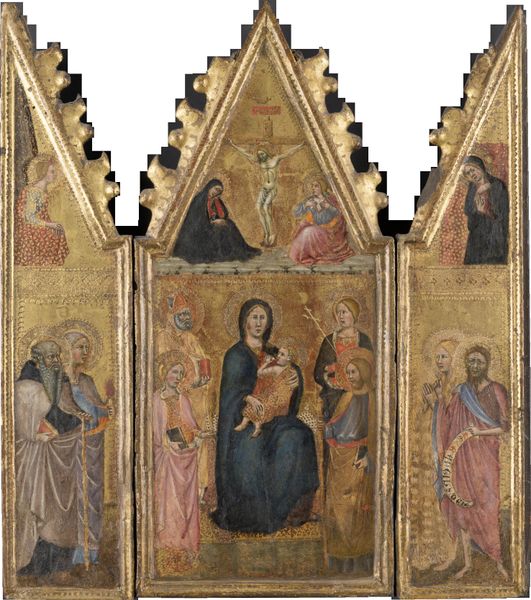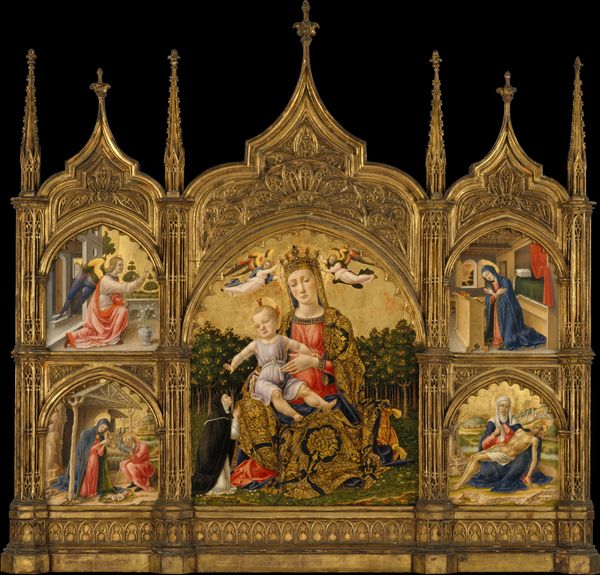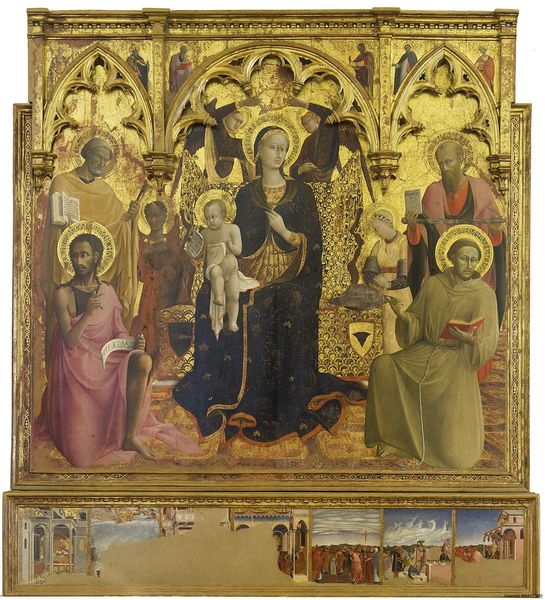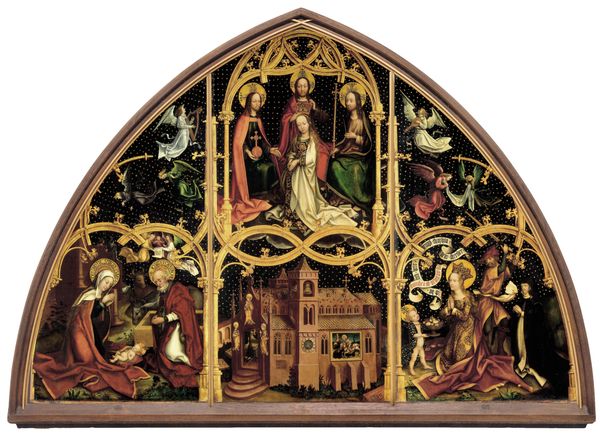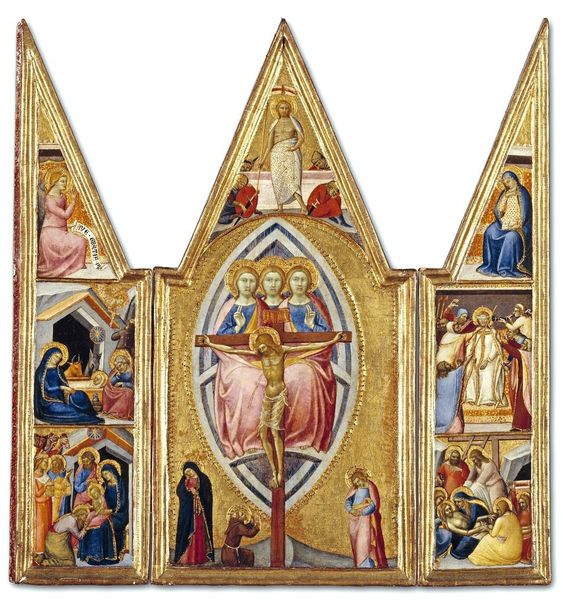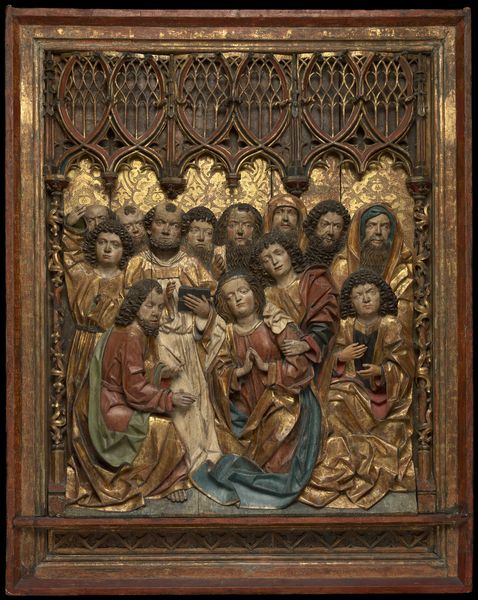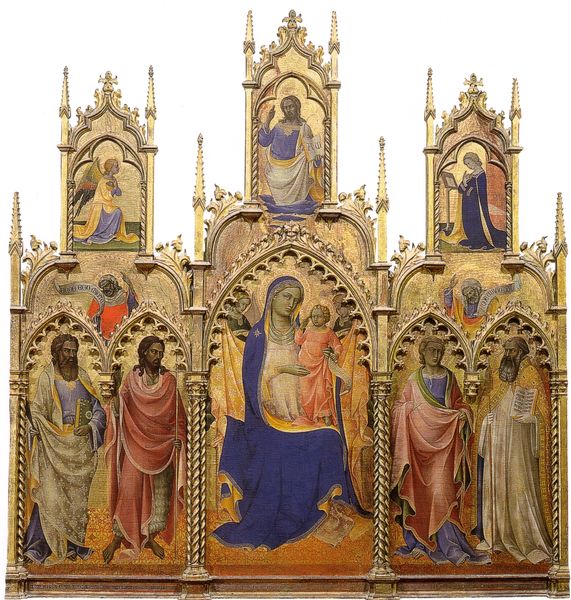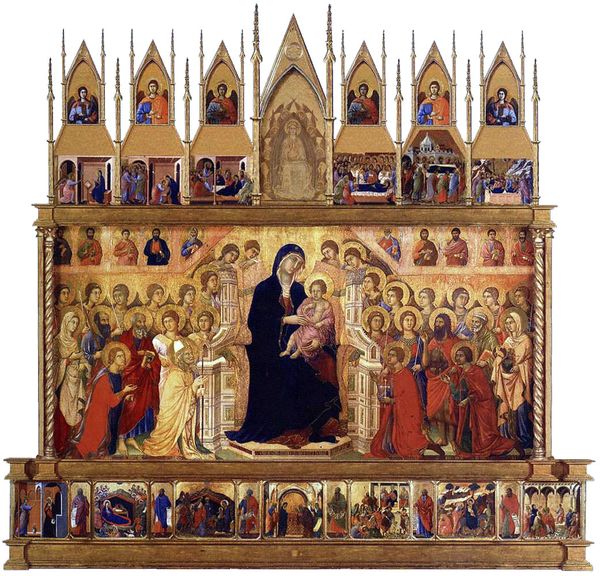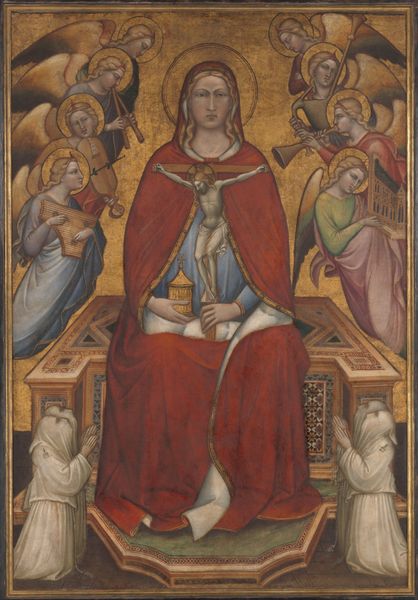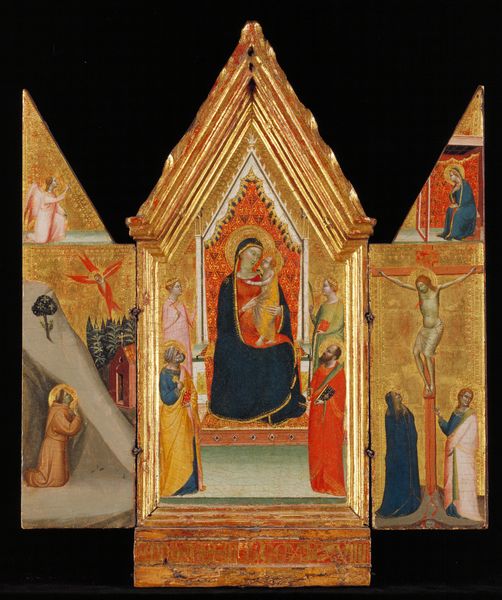
panel, carving, tempera, painting
#
medieval
#
panel
#
carving
#
narrative-art
#
tempera
#
painting
#
stone
#
sculpture
#
holy-places
#
sculptural image
#
figuration
#
historic architecture
#
traditional architecture
#
history-painting
#
italian-renaissance
#
statue
Copyright: Public domain
Curator: This is "The Assumption of the Virgin," created in 1362 by Luca di Tommè. It’s a tempera and gold on a panel, incorporating carving. What’s grabbing you about it right away? Editor: It feels like floating, weightless. Look at the Virgin Mary ascending; even with all the gold leaf, the scene conveys a serene lightness. Almost dreamy. Curator: Exactly. The upward movement is palpable. This work depicts a pivotal moment in Christian theology: the Virgin Mary being taken body and soul into Heaven. Considering medieval social hierarchies, this is revolutionary. Editor: Absolutely. The Virgin Mary as a symbol of female empowerment transcends purely religious dogma. During this period, women’s bodies and roles were rigidly controlled. The Assumption signifies an elevation of the feminine, defying those patriarchal constraints, quite radical, really. Curator: Agreed! Luca di Tommè, working in Siena, captured the religious fervor and artistic innovation bubbling in 14th-century Italy. Look at the surrounding saints and angels; there's an ethereal quality about them all looking towards the virgin, wouldn’t you agree? Editor: They look almost ghost-like, all so pale and serene as if in a trance, each frozen and with the Virgin sitting so poised above them all, truly ethereal. Also, can we just note, as ever with art from this time, there's just something about all the gold. Curator: That use of gold reflects the divine light. The Virgin Mary is glowing—it emphasizes the importance of the ascent. This work, although overtly religious, reflects cultural desires for social change. It is truly spectacular in both intent and artistry. Editor: And to imagine it in its original setting! So much is packed in here that speaks to freedom, liberation, a different view on womanhood—and it still sparks conversation today, centuries after di Tommè mixed those first pigments.
Comments
No comments
Be the first to comment and join the conversation on the ultimate creative platform.
